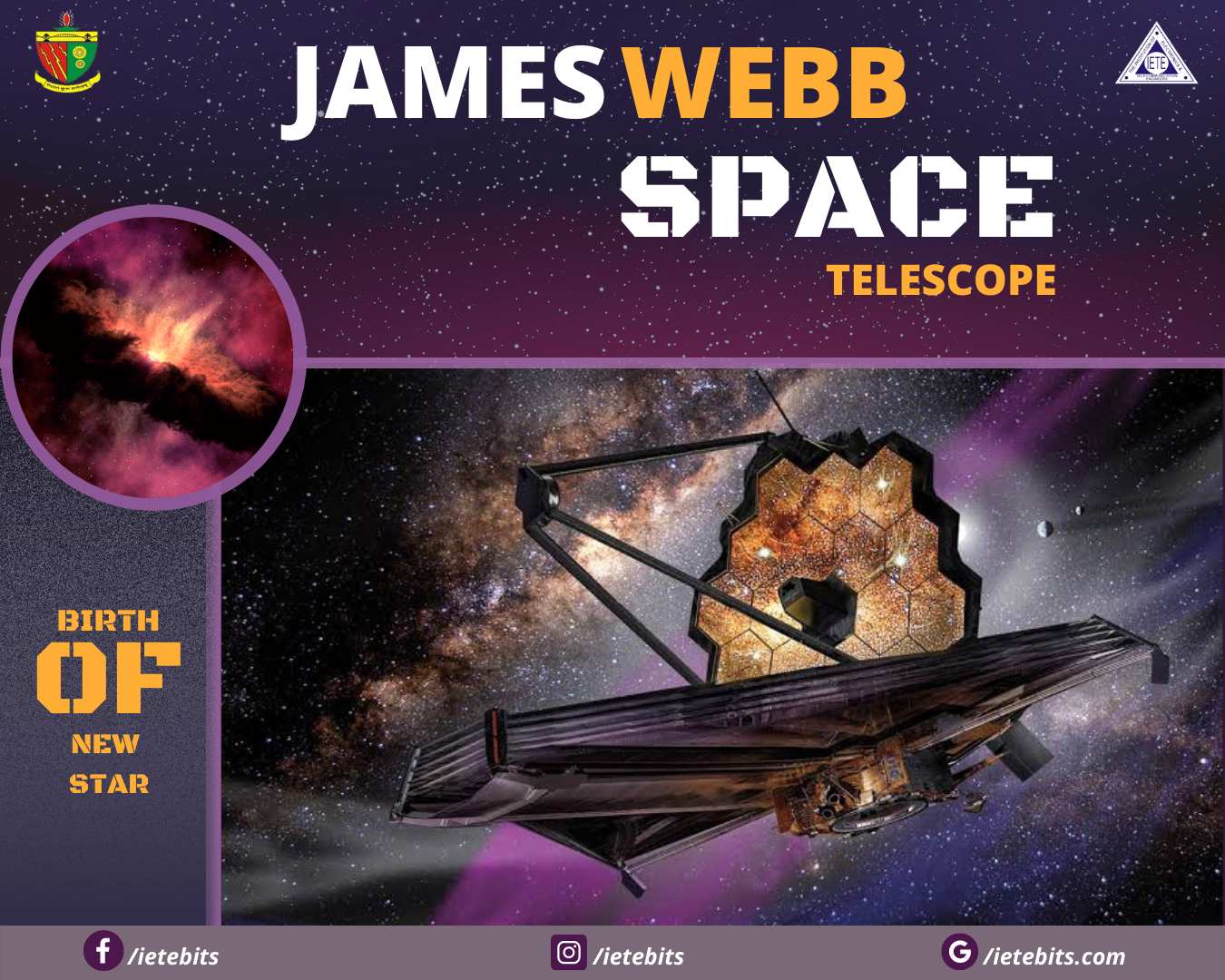


Written by - Aman Kumar Singh
Uploaded on - 26/12/2021
“The soul without imagination is what an observatory would be without a telescope.” ~HENRY WARD BEECHER
Space, Cosmos, Nebula, Constellations, Galaxies are such engrossing names. Universe fascinates all generations irrespective of their knowledge. Do you remember how enthralled we used to be when we were called to look the stars, moon with telescope. Now, scientists moved forward to see how a star take birth and are upto discover unknown facts while Big Bang Theory.
NASA has prepared a powerful JAMES WEBB SPACE TELESCOPE that will help the astronomers to look back in time. Till now, The Hubble Space telescope is the only source through which we can explore space. It too helped in unveiling the mysteries of space which we could have imagined and predicted. But the thing that everybody wants to know, is how a star is formed and when the first star began to glow in the past observable universe during the time of big bang, which is not viable with Hubble telescope. Scientists are now able to see in the time when the origination of star took place and astronomers have calculated that they are going to be able to see the birth of those 1st stars as early as next year.
NASA's James Webb Space Telescope is proficient to discover objects from 13.6 billion years ago unprecedentedly early.
The youngest quasars are already quite massive. Webb should match quasars to host galaxies, uncovering region growth within the young Universe.
Stars in their death throes create heavy elements throughout the cosmos. Webb will reveal how aging, massive stars and supernovae enrich the Universe.
Protoplanetary disks are nature's laboratory for planet formation. Webb will observe their inner regions, precisely identifying elemental and molecular abundances throughout them.
Webb's coronagraph will block a star's light, revealing its orbiting planets. Life's precursor molecules, and maybe even biosignatures, could soon be discovered.
Till now, Hubble space telescope was disclosing hidden facts. But now scientist developed finer and more accomplished telescope.
A spectacular firestorm of star birth suddenly lit up the heaven and populated the first galaxies when the universe was less than five percent of its current age. Possibly the cosmos' busiest star-forming period, occurred just a few hundred million years after the big bang. Soon, through the power of NASA's James Webb Space Telescope (JWST), astronomers will look back to that raucous, early period in a deep-sky survey to trace the formation and evolution of the first galaxies.
Young Exoplanets on the Edge: Before planets around other stars were first discovered in the 1990s, these far-flung exotic worlds lived only in the imagination of science fiction writers. They range from star-hugging “Hot Jupiters” to oversized rocky planets dubbed “Super Earths.” Our universe apparently is stranger than fiction. Seeing these distant worlds isn't easy because they get lost in the glare of their host stars. Trying to detect them is like straining to see a firefly hovering next to a lighthouse's brilliant beacon.
Objects in the Graveyard of the Solar system: Beyond the orbit of Neptune, a diverse collection of thousands of dwarf planets and other relatively small objects dwells in a region called the Kuiper Belt. These often-pristine leftovers from our solar system's days of planet formation are called Kuiper Belt Objects, or Trans Neptunian Objects. NASA's upcoming James Webb Space Telescope will examine an assortment of these icy bodies in a series of programs called Guaranteed Time Observations shortly after its launch in 2021.
JSWT is the biggest invention of the era.